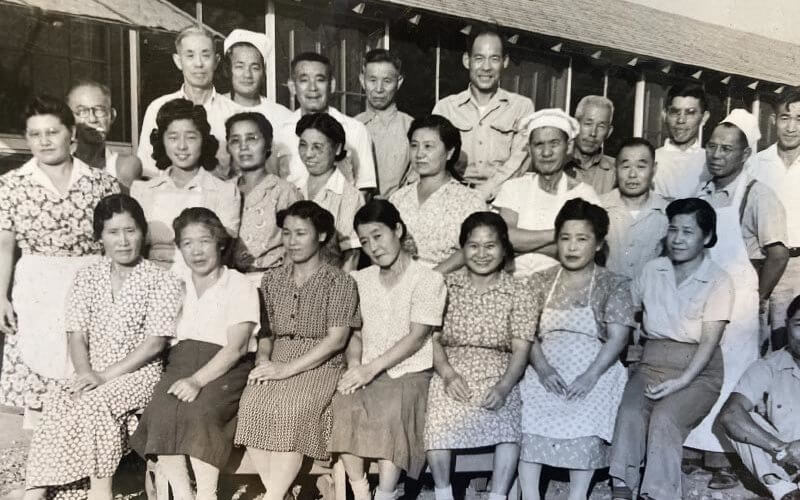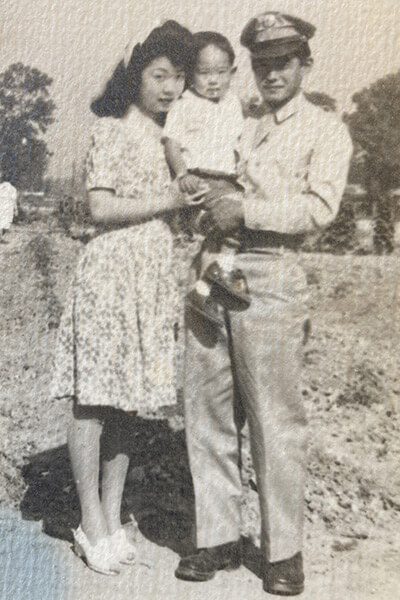
When the outbreak of COVID-19 rapidly spread into a global health crisis, fears escalated among many in America. Labels such as the “Chinese virus,” “kung flu” and “Wuhan virus” triggered a resurgence of anti-Asian sentiment, and hate incidents and crimes, said Karen Yonemoto, lecturer in Asian American studies.
Cal State Fullerton’s choice of George Takei’s “They Called Us Enemy” as this year’s “One Book, One CSUF” selection looks at some of the seeds of these hate crimes. The graphic memoir depicts the experiences of Takei’s family as well as thousands of other Japanese Americans who were sent to internment camps when President Franklin D. Roosevelt signed Executive Order 9066 in 1942. The order, mandating that persons of Japanese ancestry be systematically relocated to these camps, provides insight into the lives of Japanese Americans who spent years living there. “They Called Us Enemy” is among one of the first graphic novels to feature Japanese American characters and the storyline is rooted in Japanese American history.
Coincidentally, Craig Ihara, professor emeritus of philosophy and founding coordinator of the Department of Asian American Studies, was born in the same camp that housed the Takei family.

“I’m very grateful to George Takei for writing his book,” Ihara said. “I think it’s very important today with all of the rising Asian hate crimes that we recognize the experience of Japanese Americans during World War II. It’s one of the clearest examples of how the government and its citizens betrayed citizens of the United States.
“Older people lost the most in the relocation,” he continued. “What has always struck me, still to this day, is that they didn’t express a lot of anger or bitterness. I think it was for the sake of the children. They didn’t want their children to grow up bitter and angry at the United States. They wanted them to be looking toward the future, to be well educated. Being put into a camp, being excluded, being regarded as untrustworthy, disloyal, not American, was a terrible shock.”
“I have been researching, writing about and speaking on the topic of the World War II Japanese American mass eviction and incarceration experience since 1972, nearly a half century ago,” said Art Hansen, professor emeritus of history. “My primary concern has focused on the resistance to the wholesale removal from the West Coast region of some 110,000 to 120,000 people in all, and their subsequent imprisonment in 10 American-style concentration camps, euphemistically called relocation centers by the United States government.
“What is the citizen’s rightful response to constitutional transgressions? What indeed, is a citizen’s responsibility when racially based restrictions are imposed by an errant government?”
Hansen turned his attention to a poem, written by Lawson Inada, a third-generation Japanese American poet who, at three-years-old, was sent along with his family to an internment camp. Inada eventually became a poet and writer and many of his works focus on the resistance movement. He was named as Oregon’s fifth poet laureate in 2006.
Drawing the line
No, you have no right to imprison my parents.
No, you have no right.
To deny us our liberty.
Yes, I have my right.
To stand for justice.
Yes, I have my right to stand for freedom. And this is where you drew the line on paper on the pages of the Constitution. The rest is history. Arrested, judged, sitting in prison for three years for refusing induction under such conditions, as long as my family is in here.
Eventually there arrives a few sentences of presidential pardon, period.
But history doesn’t rest.
Drawing the line on paper again.
“I really like George Takei, because in 1967, he was on TV,” said Thomas Fujita-Rony, associate professor of Asian American studies. “And my parents said, yes, you can watch. He wasn’t playing the sidekick. He wasn’t the evil criminal type. He was actually a relatively fully rounded character.
“I found it interesting that the book not only focuses on the experience of being in the camp but on the Takei family’s experience coming out of camp. It was not so easy. One, there was a lot of fear because Takei’s dad was released from the camp first. The rest of the family was on their own in the camp. When the family was reunited outside the camp, they were on their own. There was no assistance or compensation for what they’d lost. So their postwar life began on Skid Row in Los Angeles.”
While the Takei family was able to overcome this unjustified assault on their lives, others didn’t feel the same sense of anger or humiliation.
Growing up in Hawaii, Fujita-Rony saw lots of people who looked like him. His father was a professor. The governor of Hawaii looked like him. The Sears repairman looked like him. He was aware of the treatment of Japanese Americans but didn’t receive the same level of unjust treatment.
“I found out more of what really happened when I moved to the continental United States and that’s what propelled my studies,” he said. The next event focused on “One Book, One CSUF” will be “Using Graphic Memoirs to Support Inquiry Into Issues of Social Justice.” The Tuesday, Nov. 9, 2-3 p.m. program will be facilitated by Kira LeeKeenan, assistant professor of secondary education.
Register for the program here.